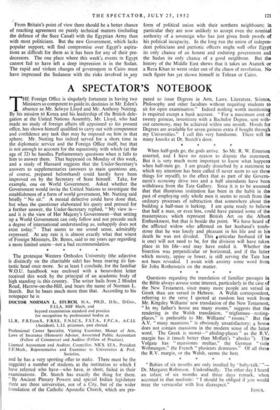When half-gods go, the gods arrive. So Mr. R. W.
Emerson asserted, and I have no reason to dispute the statement. But it is very much more important to know what happens when half-men go. I am greatly disturbed by a statement to which my attention has been called (I never seem to see these things for myself), to the effect that as part of the Govern- ment's economy drive two and a half attendants have been withdrawn from the Tate Gallery. Since it is to be assumed that that illustrious institution has been in the habit in the past of employing only whole men it seems to result from the ordinary processes of subtraction that somewhere about the building a half-man is lurking. I am quite ready to believe that half a man, or even less, could have painted some of the masterpieces which represent British Art on the Albert Embankment, but that is beside the point. We have heard of the afflicted widow who affirmed on her husband's tomb- stone that he was lovely and pleasant in his life and in his death he was not divided. This *articular husband (if ho is one) will not need to be, for the division will have taken place in his life—and may have ended it. Whether the bisection was perpendicular or horizontal, and if the latter which moiety, upper or lower, is still serving the Tate has not been revealed. I await with anxiety some word from Sir John Rothenstein on the matter.


































 Previous page
Previous page